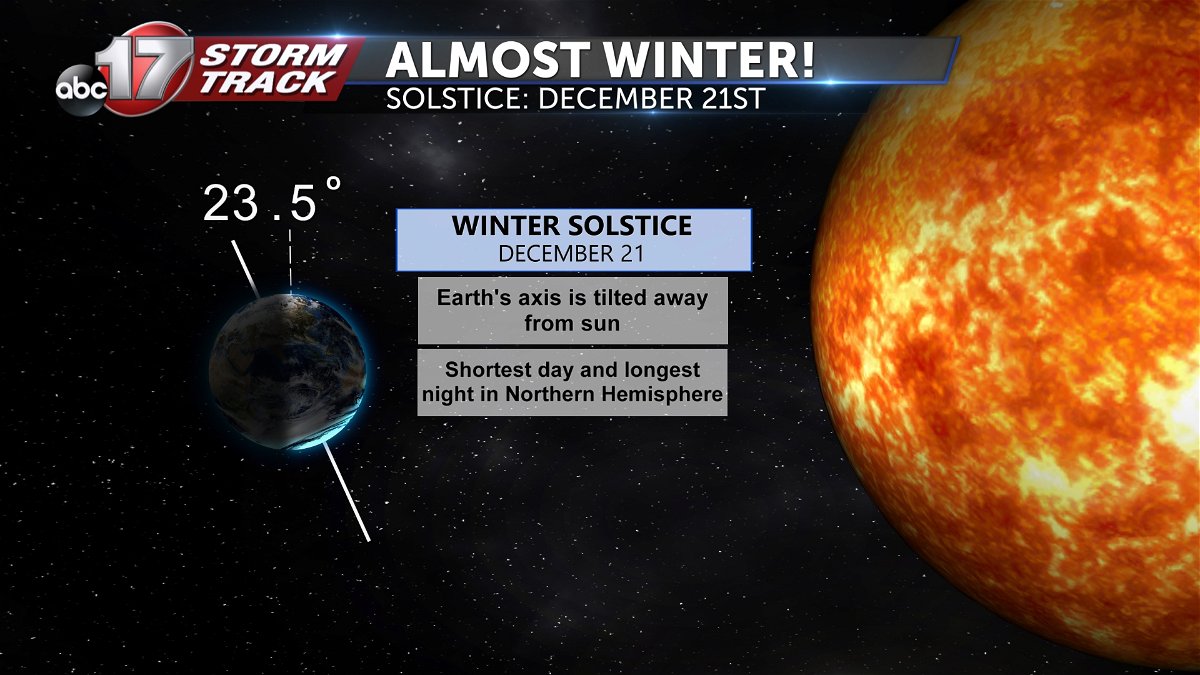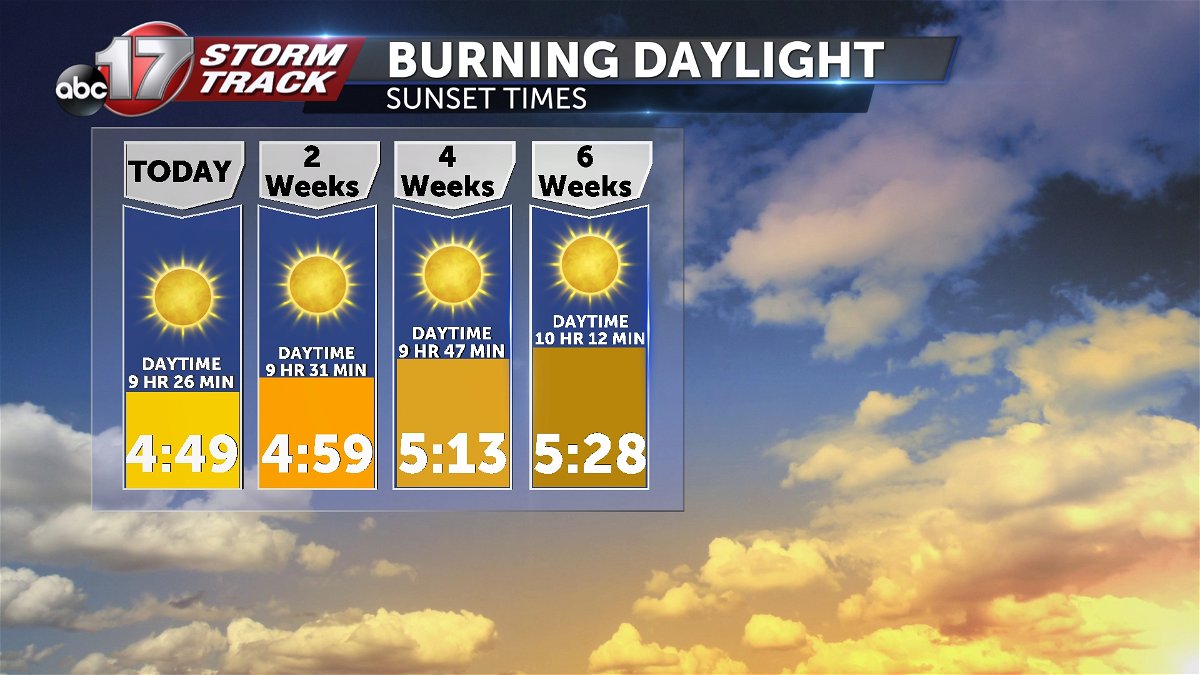Science of the winter solstice
It’s no surprise that we have been losing daylight the deeper we have made our way towards winter. And we are going to continue this pattern for just one more day. Tomorrow marks the winter solstice for the northern hemisphere kicking off winter.

The winter solstice occurs December 21st for 2023. There are four main benchmarks when it comes to the earth's tilt toward the sun each year. Two are known as the Equinox, while there are two others known as the solstices. During the summer solstice, the northern hemisphere points more directly towards the sun.

During the winter solstice, the northern hemisphere portrays the opposite as the sunlight is at its least direct angle towards the sun limiting the amount of daylight time.

For those in favor of later sunset times, things are looking up for you as the sunset will actually begin to start rolling back later for the coming weeks after tomorrow.
